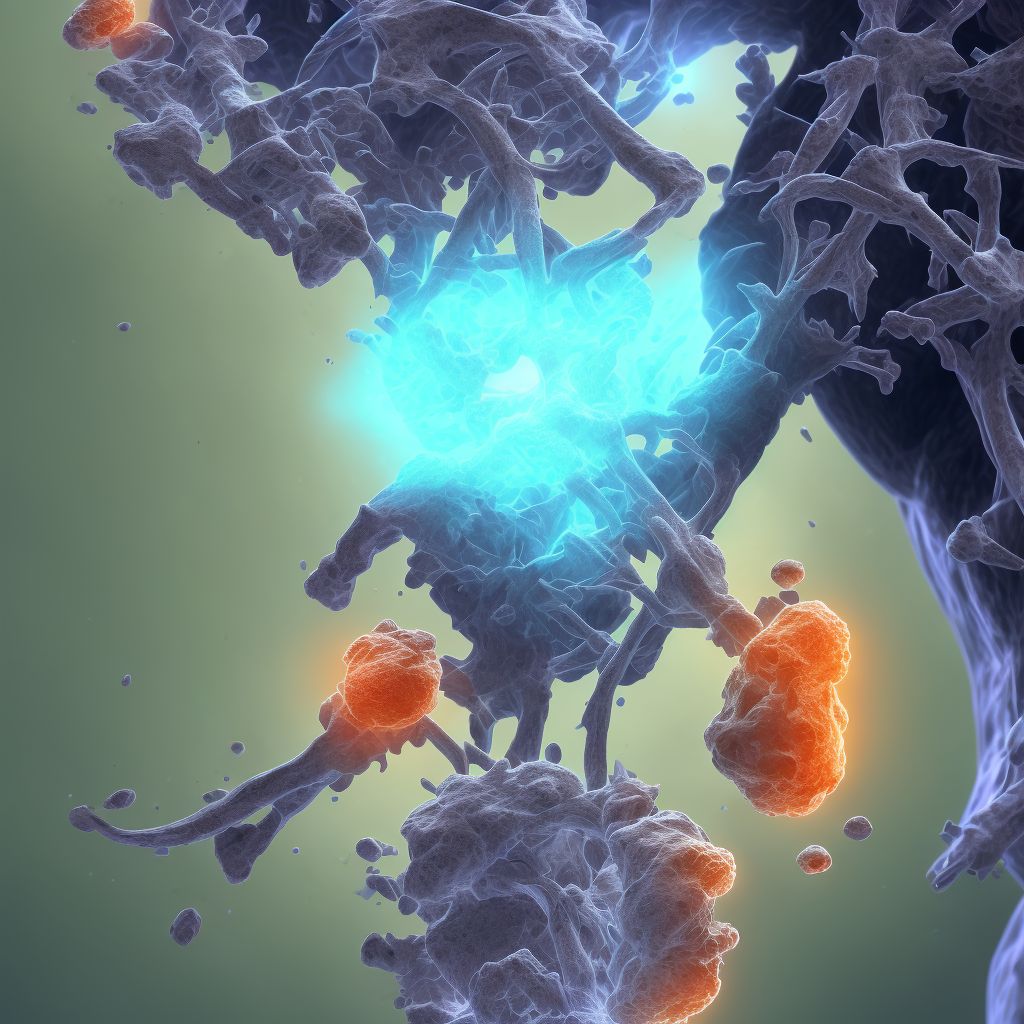
Nondisplaced fracture of medial condyle of left tibia, subsequent encounter for open fracture type I or II with malunion Save
ICD-10 code: S82.135Q
Disease category: S82.135: Nondisplaced fracture of medial condyle of left tibia
Nondisplaced Fracture of Medial Condyle of Left Tibia: Understanding Open Fracture Type I or II with Malunion
A nondisplaced fracture of the medial condyle of the left tibia is a type of injury that occurs when the bony prominence on the inner side of the shinbone (tibia) breaks, but the bone fragments remain in their original position. This condition is usually accompanied by an open fracture type I or II with malunion, which refers to a bone break that penetrates the skin and has not healed properly, resulting in misalignment.
When dealing with a nondisplaced fracture of the medial condyle of the left tibia, subsequent encounters are necessary to address the open fracture type I or II with malunion. These subsequent encounters typically involve diagnostic assessments, ongoing monitoring, and potential treatment options to correct the malunion.
- Diagnostic Assessments: During subsequent encounters, medical professionals conduct various diagnostic assessments to evaluate the extent of the open fracture type I or II with malunion. These assessments may include X-rays, CT scans, or MRI scans to determine the severity of the malalignment and assess any potential complications.
- Ongoing Monitoring: Regular follow-up visits are crucial to monitor the healing progress and ensure that the malunion does not worsen. During these visits, healthcare providers assess the alignment of the tibial condyle and determine if any further intervention is necessary.
- Treatment Options: While this article does not focus on treatment, subsequent encounters may involve discussions about potential treatment options. Depending on the severity of the malunion and associated symptoms, treatment options may include surgical interventions, such as fracture reduction, realignment, or the use of fixation devices to stabilize the fracture site.
It is important to note that treatment decisions for an open fracture type I or II with malunion depend on several factors, including the patient's overall health, age, activity level, and the specific characteristics of the fracture. Therefore, it is essential to consult with a qualified healthcare professional for an accurate diagnosis and personalized treatment plan.
In conclusion, a nondisplaced fracture of the medial condyle of the left tibia, subsequent encounter for open fracture type I or II with malunion requires ongoing monitoring and potential treatment options to correct the misalignment. Regular diagnostic assessments and follow-up visits are crucial in managing this condition effectively.
Treatment of Nondisplaced fracture of medial condyle of left tibia, subsequent encounter for open fracture type I or II with malunion:
Treatment Options for Nondisplaced Fracture of Medial Condyle of Left Tibia
A nondisplaced fracture of the medial condyle of the left tibia can be a painful and debilitating condition. It occurs when there is a break in the bone without any significant displacement. This type of injury often requires medical attention to ensure proper healing and prevent long-term complications.
To see full information about treatment please Sign up or Log in